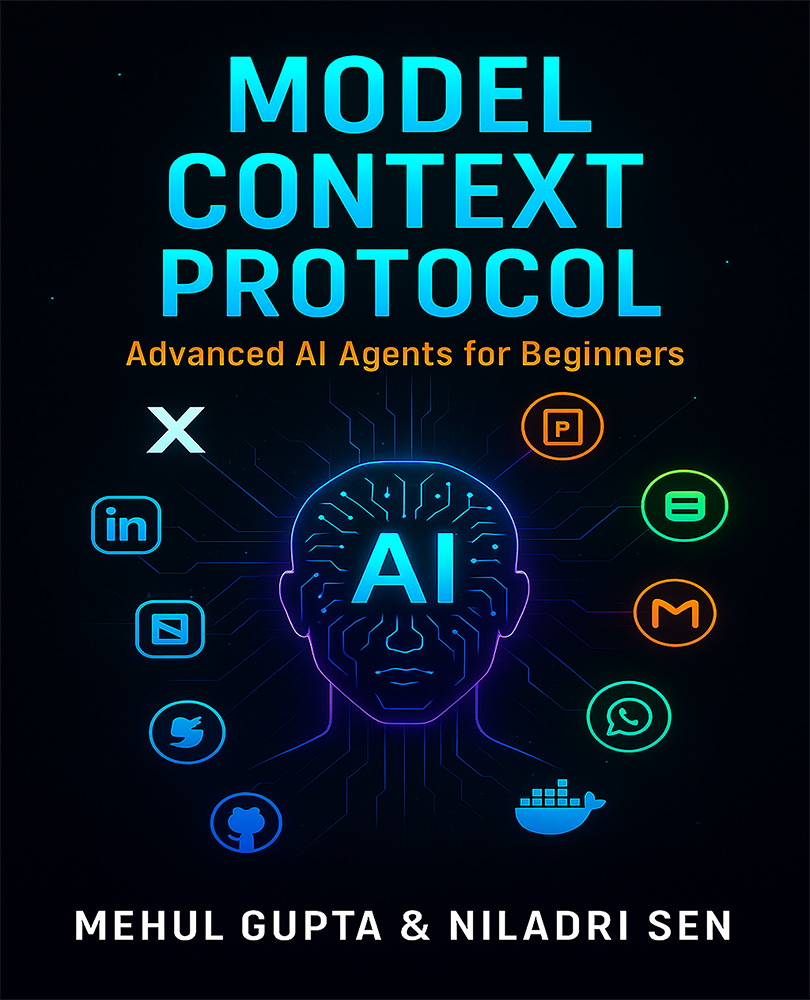The Industrial Internet, the IIoT, the 4th Industrial Revolution or Industry 4.0, whatever you may call it, has gained a lot of traction in recent times. Many leading companies are driving this revolution, connecting smart edge devices to cloud-based analysis platforms and solving their business challenges in new and smarter ways. To ensure the smooth integration of such machines and devices, effective architectural strategies based on accepted principles, best practices, and lessons learned, must be applied.
In this interview, Shyam throws light on his new book, Architecting the Industrial Internet, and shares expert insights into the world of IIoT, Big Data, Artificial Intelligence and more.
Shyam Nath
 Shyam is the director of technology integrations for Industrial IoT at GE Digital. His area of focus is building go-to-market solutions. His technical expertise lies in big data and analytics architecture and solutions with focus on IoT. He joined GE in Sep 2013 prior to which he has worked in IBM, Deloitte, Oracle, and Halliburton. He is the Founder/President of the BIWA Group, a global community of professional in Big Data, analytics, and IoT. He has often been listed as one of the top social media influencers for Industrial IoT. You can follow him on Twitter @ShyamVaran.
Shyam is the director of technology integrations for Industrial IoT at GE Digital. His area of focus is building go-to-market solutions. His technical expertise lies in big data and analytics architecture and solutions with focus on IoT. He joined GE in Sep 2013 prior to which he has worked in IBM, Deloitte, Oracle, and Halliburton. He is the Founder/President of the BIWA Group, a global community of professional in Big Data, analytics, and IoT. He has often been listed as one of the top social media influencers for Industrial IoT. You can follow him on Twitter @ShyamVaran.
He talks about the IIoT, the various impacts that technologies like AI and Deep Learning will have on IIoT and he gives a futuristic direction to where IIoT is headed towards. He talks about the challenges that Architects face while architecting IIoT solutions and how his book will help them overcome such issues.
Key Takeaways
- The fourth Industrial Revolution will break silos and bring IT and Ops teams together to function more smoothly.
- Choosing the right technology to work with involves taking risks and experimenting with custom solutions.
- The Predix platform and Predix.io allow developers and architects, quickly learn from others and build working prototypes that can be used to get quick feedback from the business users.
- Interoperability issues and a lack of understanding of all the security ramifications of the hyper-connected world could be a few challenges that adoption of IIoT must overcome
- Supporting technologies like AI, Deep Learning, AR and VR will have major impacts on the Industrial Internet
In-depth Interview
On the promise of a future with the Industrial Internet
The 4th Industrial Revolution is evolving at a terrific pace. Can you highlight some of the most notable aspects of Industry 4.0?
The Industrial Internet is the 4th Industrial Revolution. It will have a profound impact on both the industrial productivity as well as the future of work. Due to more reliable power, cleaner water, and Intelligent Cities, the standard of living will improve, at large for the world citizens. Industrial Internet will forge new collaborations between the IT and OT, in the organizations, and each side will develop a better appreciation of the problems and technologies of the other. They will work together to create smoother overall operations by breaking the silos.
On Shyam’s IIoT toolbox that he uses on a day to day basis
You have a solid track record of architecting IIoT applications in the Big Data space over the years. What tools do you use on a day-to-day basis?
In order to build Industrial Internet applications, GE's Predix is my preferred IIoT platform. It is built for Digital Industrial solutions, with security and compliance baked into it. Customer IIoT solutions can be quickly built on Predix and extended with the services in the marketplace from the ecosystem. For Asset Health Monitoring and for reducing the downtime, Asset Performance Management (APM) can be used to get a jump start and its extensibility framework can be used to extend it.
Unlock access to the largest independent learning library in Tech for FREE!
Get unlimited access to 7500+ expert-authored eBooks and video courses covering every tech area you can think of.
Renews at $19.99/month. Cancel anytime
On how to begin one’s journey into building the Industry 4.0
For an IIoT architect, what would your recommended learning plan be? What aspects of architecting Industry 4.0 applications are tricky to master and how does your book Architecting the Industrial Internet, prepare its readers to be industry ready?
An IIoT Architect can start with the book Architecting the Industrial Internet, to get a good grasp of the area broadly. This book provides a diverse set of perspectives and architectural principles, from authors who work in GE Digital, Oracle and Microsoft. The end-to-end IIoT applications involve an understanding of sensors, machines, control systems, connectivity and cloud or server systems, along with the understanding of associated enterprise data, the architect needs to focus on a limited solution or proof of concept first.
The book provides coverage for the end-to-end requirements of the IIoT solutions for the architects, developers and business managers. The extensive set of use cases and case studies provides examples from many different industry domains to allow the readers to easily related to it. The book is written, in a style that would not overwhelm the reader, yet explain the workings of the architecture and the solutions.
The book will be best suited for Enterprise Architects and Data Architects who are trying to understand how IIoT solutions differ from traditional IT solutions. The layer-by-layer description of the IIoT Architecture will provide a systematic approach to help develop a deep understanding, for Architects. IoT Developers who have some understanding of this area can learn the IIoT platform-based approach to building solutions quickly.
On how to choose the best technology solution to optimize ROI
There are so many IIoT technologies, that manufacturers are confused as to how to choose the best technology to obtain the best ROI. What would your advice to manufacturers be, in this regard?
The manufacturers and operation leaders look for quick solutions to known issues, in a proven way. Hence, often they do not have the appetite to experiment with a custom solution, rather they like to know where the solution provider has solved similar problems and what was the outcome. The collection of use cases and case studies will help business leaders get an idea of the potential ROI while evaluating the solution.
Getting to know Predix, GE’s IIoT platform, better
Let's talk a bit about Predix, GE's IIoT platform. What advantages does Predix offer developers and architects? Do you foresee any major improvements coming to Predix in the near future?
The GE's Predix platform has a growing developer community that is approaching 40,000 strong. Likewise, the ecosystem of Partners is approaching 1000. Coupled with the free access to create developer accounts on Predix.io, the developers and architects can quickly learn from others and build working prototypes that can be used to get quick feedback from the business users. The catalog of microservices at Predix.io will continue to expand. Likewise, applications written on top of Predix, such as APM and OPM (Operations Performance Management) will continue to become feature-rich, providing coverage to many common Digital Industrial challenges.
On the impact of other emerging technologies like AI on IIoT
What according to you will the impact be of AI and Deep Learning, on IIoT?
AI and Deep Learning help to build robust Digtal Twins of the industrial assets. These Digital Twins, will make the job of predictive maintenance and optimization, much easier for the operators of these assets.
Further, IIoT will benefit from many new advances in technologies like AI, AR/VR and make the job of Field Services Technicians easier. IIoT is already widely used in energy generation and distribution, Intelligent Cities for law enforcement and to ease traffic congestion. The field of healthcare is evolving, due to increasing use of wearables. Finally, precision agriculture is enabled by IoT as well.
On likely barriers to IIoT adoption
What are the roadblocks you expect in the adoption of IIoT?
Today the challenges to rapid adoption of IoT, are interoperability issues and lack of understanding of all the security ramifications of the hyper-connected world. Finally, how to explain the business case of the IoT to the decision makers and different stakeholders is still evolving.
On why Architecting the Industrial Internet is a must read for Architects
Would you like to give architects 3 reasons on why they should pick up your book?
- It is written by IIoT practitioners from large companies who are building solutions for both internal and external consumption.
- The book captures the architectural best practices and advocates a platform based approach, to solutions.
- The theory is put to practice in the form of use cases and case studies, to provide a comprehensive guide to the architects.
If you enjoyed this interview, do check out Shyam’s latest book, Architecting the Industrial Internet.

 United States
United States
 Great Britain
Great Britain
 India
India
 Germany
Germany
 France
France
 Canada
Canada
 Russia
Russia
 Spain
Spain
 Brazil
Brazil
 Australia
Australia
 Singapore
Singapore
 Canary Islands
Canary Islands
 Hungary
Hungary
 Ukraine
Ukraine
 Luxembourg
Luxembourg
 Estonia
Estonia
 Lithuania
Lithuania
 South Korea
South Korea
 Turkey
Turkey
 Switzerland
Switzerland
 Colombia
Colombia
 Taiwan
Taiwan
 Chile
Chile
 Norway
Norway
 Ecuador
Ecuador
 Indonesia
Indonesia
 New Zealand
New Zealand
 Cyprus
Cyprus
 Denmark
Denmark
 Finland
Finland
 Poland
Poland
 Malta
Malta
 Czechia
Czechia
 Austria
Austria
 Sweden
Sweden
 Italy
Italy
 Egypt
Egypt
 Belgium
Belgium
 Portugal
Portugal
 Slovenia
Slovenia
 Ireland
Ireland
 Romania
Romania
 Greece
Greece
 Argentina
Argentina
 Netherlands
Netherlands
 Bulgaria
Bulgaria
 Latvia
Latvia
 South Africa
South Africa
 Malaysia
Malaysia
 Japan
Japan
 Slovakia
Slovakia
 Philippines
Philippines
 Mexico
Mexico
 Thailand
Thailand

 Shyam is the director of technology integrations for Industrial IoT at GE Digital. His area of focus is building go-to-market solutions. His technical expertise lies in big data and analytics architecture and solutions with focus on IoT. He joined GE in Sep 2013 prior to which he has worked in IBM, Deloitte, Oracle, and Halliburton. He is the Founder/President of the BIWA Group, a global community of professional in Big Data, analytics, and IoT. He has often been listed as one of the top social media influencers for Industrial IoT. You can follow him on Twitter @ShyamVaran.
Shyam is the director of technology integrations for Industrial IoT at GE Digital. His area of focus is building go-to-market solutions. His technical expertise lies in big data and analytics architecture and solutions with focus on IoT. He joined GE in Sep 2013 prior to which he has worked in IBM, Deloitte, Oracle, and Halliburton. He is the Founder/President of the BIWA Group, a global community of professional in Big Data, analytics, and IoT. He has often been listed as one of the top social media influencers for Industrial IoT. You can follow him on Twitter @ShyamVaran.














